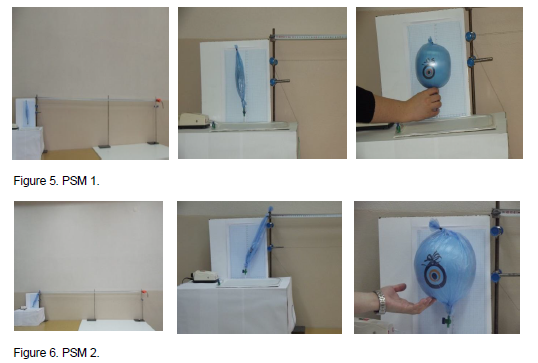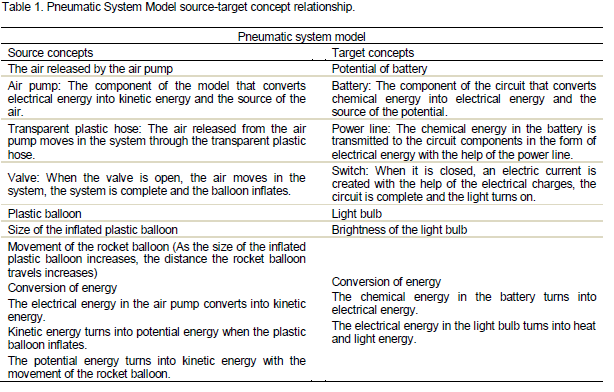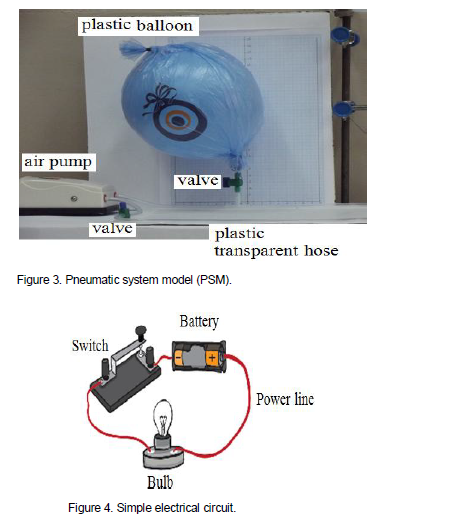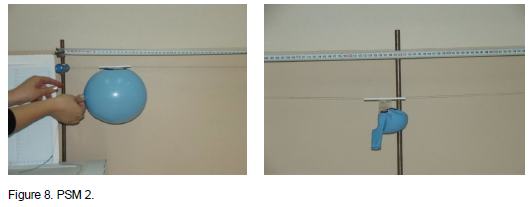The importance of electricity and its use in daily life are reasons that the topic of electricity is included in curriculum for students at early ages. It is not easy however to teach students the basic concepts of electricity and equally difficult for them to grasp and understand these concepts. Various studies can be found in the literature about learning difficulties (Chambers and Andre, 1997; Engelhardt and Beichner, 2004; McDermott and Shaffer 1992; Shipstone et al., 1988) and misconceptions among students in this context (Cohen et al., 1983; Dupin and Johsua, 1987; Heller and Finley, 1992; Lee and Law, 2001; Millar and King, 1993; Osborne, 1981, 1983; Psillos and Koumaras, 1988). Also since explaining electrical phenomena has to do with abstract physical concepts and microscopic interactions, it is important that activities to increase students' understanding are designed so that a relationship can be formed with concrete concepts (Yi?it and Özmen, 2006). Models are frequently used in this context to teach concepts to students. Models are temporary schemes or structures that correspond to real objects, events, or classes of events. Models have explanatory power. Students can present their results to students, teachers, and others with models. The science and technology standards connect students to the designed world, present them experimentation in making models of objects and systems, and introduce them to laws of nature through their understanding of how technological objects and systems work (National Research Council (NRC), 1996). An experiment-based analogical pneumatic system model (PSM) was developed in this study for the purpose of teaching 5th grade students (11 years old) the variables that have an effect on the brightness of a light bulb in a simple electric circuit.
PSM source-target concept relationship
The air released by the air pump (battery) that creates the air flow in the system reaches the plastic balloon (light bulb) with a transparent plastic hose (power line) and the balloon inflates (light turns on). The size of the inflated balloon (brightness of the light bulb) varies according to the number of the balloons (number of the light bulbs) and the cycle (number of batteries) at which the air pump is operated (Table 1). Putting the balloons in the PSM inside the plastic bags is important in terms of making the two balloons inflate equally and demonstrating that there is a limit to how bright the light bulb can get. This is because the brightness of the light does not increase the more the number of batteries since it would burst if it did. Similarly, the balloon inflated inside the plastic bag would burst at some point.
The experiment-based activity that used a PSM was carried out in three stages:
(1) Stage 1: Understanding the analogical relationship between source and target in teaching the variables that have an effect on the brightness of a light bulb in a simple electric circuit using a PSM.
(2) Stage 2: Understanding the analogical relationship between the effect on the brightness of a light bulb when the number of light bulbs is kept fixed but the number of batteries is increased and the effect on the size of an inflated balloon and the distance traveled by the rocket balloon when the number of balloons is kept fixed but the cycle of the air pump is increased.
(3) Stage 3: Understanding the analogical relationship between the effect on the brightness of a light bulb when the number of batteries is kept fixed but the number of light bulbs is increased and the effect on the size of the inflated balloon and the distance traveled by the rocket balloon when the cycle of the air pump is fixed but the number of balloons is increased (Figures 1 and 2).
First stage: The analogical relationship between the PSM and the simple electrical circuit
The figures demonstrating the experiment set-up for the PSM that forms the basis of the experiment (Figure 3) and the simple electrical circuit (Figure 4) show which circuit component corresponds to which component in the model. To better understand the experiment-based model in the next stages, this relationship must be kept in mind.
Second stage: Using the PSM to teach the effect on the brightness of a light bulb when the number of light bulbs is kept fixed while the number of batteries is increased
In this stage of the experiment-based PSM activity, a study will be made of the effects of keeping the number of light bulbs in the simple electrical circuit fixed while the number of batteries is increased. The tools and equipment needed for this stage are: an air pump, a plastic transparent hose, 2 valves, 1 plastic balloon, 1 plastic bag, 1 straw, rope, steel tape measure, 2 supports, 4 connection pieces, graph paper and a white metal plate.
PSM 1 and 2 shown in Figures 5 and 6 should be set up horizontally and the air pump that will be delivering air to the system should be connected to the transparent plastic hoses. Then valve 1 should be connected to the transparent plastic hoses as in Figure 3. The air pump in the PSM delivers air into the system and the amount of air entering the system varies according to the cycle at which the air pump is operating. The air pump in PSM 1 should be operated at Cycle 1 (2, 5 L/min), the one in PSM 2 should be operated at Cycle 2 (5 L/min).
The transparent plastic hose should fill up with air when the air enters the system and the plastic balloon should start inflating. The valve should be left open so that the balloon can inflate. The air pump should be operated for 1 min. After 1 min, the pump should be stopped so that the air in the system is kept fixed. The size of the inflated balloon should be observed and it should be measured with a piece of graph paper fixed to the back of the balloon. Figures 5 and 6 should be examined to compare the sizes of the balloons in the analogical models.

The system up until this point is closed as in a simple electrical circuit. However, in order to form an analogical relationship with the conversion of energy in the simple electrical circuit, a straw with a piece of string passed through it should be attached to the balloon so that the rocket balloon is separated from the system. The rocket balloon in the analogical model uses the air inside it as fuel and from the moment it is left free, it jets forward until the air is completely pushed out, stopping when the air is depleted. The distance traveled by the rocket balloon in the analogical model should be measured and the distances the rocket balloons traveled should be compared for PSM 1 and 2. Since there will be a release of air with the release of the plastic at the tip of the rocket balloon, PSM 1 and 2 are now open systems.
In this part of the experiment, the rocket balloon in PSM 1 operated at Cycle 1 of the air pump in the first situation (Figure 7) changed its place by 120.5 cm. In the second situation (Figure 8), the air pump was operated at Cycle 2 and the rocket balloon in PSM 2 changed its place by 130.5 cm. PSM 2 is represented two batteries in series charging one bulb in circuit.

Third stage: Using the PSM to teach the effect on the brightness of a light bulb when the number of batteries is kept fixed and the number of light bulbs is increased
In this stage of the experiment-based PSM activity, a study will be made of the effects of keeping the number of batteries in the simple electrical circuit fixed while increasing the number of light bulbs. The tools and equipment needed for this stage are: an air pump, a transparent plastic hose, 3 valves, 2 plastic balloons, 2 plastic bags, 1 straw, string, steel tape measure, 2 supports, 4 connection pieces, graph paper and a white metal plate.
PSM 3 shown in Figure 9 is set up horizontally and the air pump that will be delivering air to the system should be connected to the transparent plastic hoses. Then the valve is connected to the transparent plastic hoses as in Figure 9. The air pump in PSM 3 delivers air and the amount of air entering the system varies according to the cycle at which the air pump is operated. The air pump in PSM 3 should be operated at Cycle 2 (series connection of 2 batteries). PSM 3 is represented with two batteries in series charging two bulbs in series.

The transparent plastic hose should fill up with air when the air enters the system and the plastic balloon should start inflating. The valve should be left open so that the balloon can inflate. The air pump should be operated for 1 min. After 1 min, the pump should be stopped so that the air in the system is kept fixed. The size of the inflated balloon should be observed. It should be measured with a piece of graph paper fixed to the back of the balloon. The sizes of the balloons in PSM 2 and 3 should be compared.
The system up until this point is closed as in a simple electrical circuit. However, in order to form an analogical relationship with the conversion of energy in the simple electrical circuit, a straw with a piece of string passing through it should be attached to the balloon so that the rocket balloon is separated from the system. The distance the rocket balloon travels should be measured. The distance the rocket balloon travels in the analogical model Figure 5 should be recorded. The distances traveled by the rocket balloons in PSM 2 and 3 should be compared. Since there will be a release of air with the release of the plastic at the tip of the rocket balloon, in this situation PSM 3 is now an open system.
In this part of the experiment (Figure 10), the air pump was operated at Cycle 2 and the rocket balloon changed its place by 47 cm. When the number of balloon (light bulb) is kept fixed but the cycle of air pump (the number of battery) is increased, size of the inflated plastic balloon (the brightness of a light bulb) is increased. When the cycle of air pump (the number of battery) is kept fixed but the numbers of balloons (the number of light bulb) are increased, sizes of the inflated plastic balloons (the brightness of a light bulb) are decreased.

In series circuits, the total potential of between the ends of each resistor is equal to potential of between the ends of generator. When the number of bulb in series is kept fixed, the number of battery in series is increased, potential is increased. Potential that drop each bulb in series is increased at the same rate. Current that flow through each bulb in series is increased. As a result, the brightness of a light bulb in series is increased. When the number of battery in series is kept fixed, the number of bulb in series is increased, potential is shared. Potential that drop each bulb in series is decreased at the same rate. Current that flow through each bulb in series is decreased. As a result, the brightness of a light bulb in series is decreased. When the number of bulb in series is kept fixed, the number of battery in series is increased, electrical energy is increased. Electrical energy that drops each bulb in series is increased at the same rate. As a result, the brightness of a light bulb in series is increased. When the number of battery in series is kept fixed, the number of bulb in series is increased; electrical energy is shared between the bulbs. Electrical energy that drops each bulb in series is decreased at the same rate. As a result, the brightness of a light bulb in series is decreased.
In the analogical model there are similarities and differences between the source and target concepts. To avoid misconceptions, the differences must be set forth (Duit, 1991; Kesercio?lu et al., 2004). The differences between the source and target concepts in the PSM are therefore stated below: While in a simple electrical circuit, the electric current returns to the battery, in the PSM, the air does not return to the pump. Although a simple electrical circuit is a closed system, the PSM is an open system in order to demonstrate how energy is converted. In a simple electrical circuit the battery is not separated from the circuit for the light to be turned on. In the PSM, however, the air pump is stopped to maintain the system. In a simple electrical circuit, the switch has to be closed for the light to turn on whereas in the PSM, the valve has to be open for the balloon to inflate. Transmission of air from air pump to balloon is one-way. Also, no air flows through the balloons, but charge flows through the bulb in the circuit.
The experiment-based PSM demonstrates to students the dependent, independent and controllable variables that affect the brightness of a lamp connected to a simple electrical circuit, thus helping them to develop their scientific process skills in estimating, observing, collecting data, performing experiments, problem-solving and creating models. This model, which is used in teaching applications, has produced successful results in teaching the variables that affect the brightness of a lamp in a simple electrical circuit. The model developed in this study may be used as an alternative activity before or during the teaching of simple electrical circuits. Furthermore, it is believed that the model is a good example that can be used to improve techniques and student skills in the area of guided inquiry, the basis of many academic programs in many countries. This analogical model has been developed to be applied to 5th grade students (11 years old) for teaching the variables that have an effect on the brightness of a light bulb in a simple electric circuit and the effectiveness of this model on success, attitude, mental modelling and misconceptions.
The authors have not declared any conflict of interest.
Authors would like to thank Associate Professor Kemal YÜRÜMEZO?LU* for valuable comments on Pneumatic System Model and Department of Secondary Science and Mathematics Education, DokuzEylul University, ?zmir, Turkey.







